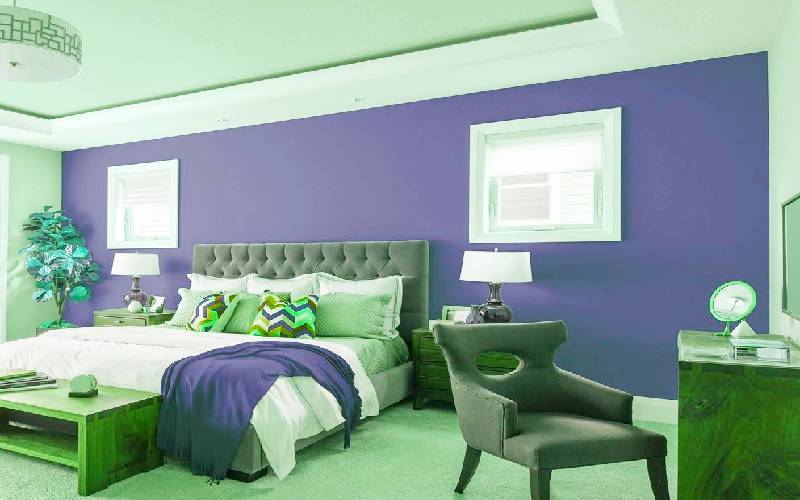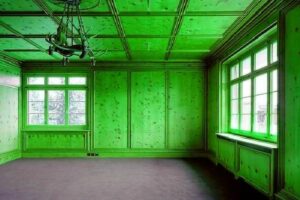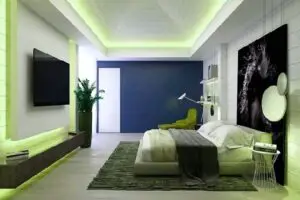Should you paint your accent wall lighter or darker? This is one of the most common questions we’re asked by our readers, and we’re going to answer it once and for all today!
The Pros and Cons of Light Accent Walls
When it comes to choosing the color for an accent wall, one of the main considerations is whether to go lighter or darker. While a lighter color can make a room seem larger and more open, a darker color can give it depth and visual interest.
Here are some of the pros and cons of light accent walls. In general, people have mixed feelings about this type of paint color because while light colors may seem fresh and vibrant they also tend to get dirty very quickly which might turn out looking like a mess.
On the other hand, dark colors might be more classic but in most cases they can often feel too heavy on their own. If you want your space to feel large, then using lighter paint for your walls will help make them appear taller and will allow you to showcase your artwork better without overwhelming the room.
However if you’re not concerned about height then dark colors will create interesting contrast against white furnishings making them pop from within the home’s interior design scheme.
How to Choose the Right Shade for Your Accent Wall
When it comes to choosing the right shade for your accent wall, the answer isn’t always clear-cut. Depending on the size of the room, the existing color scheme, and the desired effect, lighter or darker shades can both be viable options.
Here are some tips to help you determine which is right for you:
- Consider the Size of Your Room: Larger rooms can handle darker shades while smaller rooms are better suited to lighter shades. This helps create the illusion of a larger space and prevents the room from feeling cramped.

The Pros and Cons of Dark Accent Walls
When it comes to decorating your home, choosing the right color for an accent wall can be tricky. One of the biggest questions is whether you should paint your accent wall lighter or darker than the other walls in the room.
While both have their pros and cons, many homeowners opt for a darker accent wall for its dramatic effect.
Darker accent walls can make a small room feel larger and cozier, as the darkness will visually recede into the background. It can also add a sense of drama and sophistication to a room. Dark colors can also help downplay any imperfections on the walls, such as uneven surfaces or bumps.
On the other hand, dark colors can also make a room feel cramped and close in on itself, especially if the rest of the walls are lighter in color. If there’s already low natural light in the room, a dark accent wall can make it feel even more oppressive.
You’ll also want to ensure that your dark wall isn’t overwhelming the rest of the décor in the room – be sure to pair it with lighter furnishings and panel accents to keep it from dominating the space.
Overall, a dark accent wall can be an effective way to add depth and drama to a room. As long as you consider the size of the room and its overall décor, you can use this trick to your advantage to create a stylish and inviting space.
Tips for Painting an Accent Wall
Painting an accent wall is a great way to add some extra color and visual interest to your room. But what’s the best way to go about it? Should you paint your accent wall lighter or darker?
The answer really depends on the look you’re going for. If you want the wall to stand out more, then a darker color will be better. But if you’d rather have the wall blend in more with the rest of the room, a lighter hue will be best.
To help you make the right decision, here are a few tips for painting an accent wall:
- Consider the other colors in the room. Take a look at the existing colors in the room and determine which one will work best for your accent wall. If you have a lot of darker colors already in the room, then opt for a lighter color for your accent wall.
- Choose a bold color. When it comes to painting an accent wall, don’t be afraid to go bold! Opt for a bright, vibrant color that will draw attention and make the wall pop.
- Try a fun texture. If you want to make your accent wall even more interesting, try experimenting with texture. Textured walls look great and can add depth and dimension to the room.
- Paint a mural or pattern. Another great way to add some visual interest to your accent wall is to paint a mural or pattern on it. Have fun with it and let your creativity run wild!
By following these tips, you should be able to find the perfect color and style for your accent wall. So go ahead and get creative!






